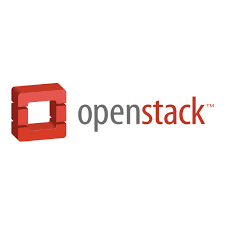-
- Troubleshooting Hybrid Cloud Deployments with OpenStack on Linux
- Understanding Hybrid Cloud Deployments
- Configuration Steps for Troubleshooting
- Step 1: Verify OpenStack Services
- Step 2: Check Network Configuration
- Step 3: Review Logs for Errors
- Step 4: Validate Resource Allocation
- Practical Examples
- Best Practices for Hybrid Cloud Deployments
- Case Studies and Statistics
- Conclusion
Troubleshooting Hybrid Cloud Deployments with OpenStack on Linux
As organizations increasingly adopt hybrid cloud architectures, the complexity of managing and troubleshooting these environments grows. OpenStack, a powerful open-source cloud computing platform, is often at the heart of these deployments. Understanding how to effectively troubleshoot issues in a hybrid cloud setup using OpenStack on Linux is crucial for maintaining performance, reliability, and efficiency. This guide provides a comprehensive approach to diagnosing and resolving common problems encountered in hybrid cloud deployments.
Understanding Hybrid Cloud Deployments
A hybrid cloud combines on-premises infrastructure with public cloud services, allowing organizations to leverage the benefits of both environments. However, this integration can lead to unique challenges, including network latency, data consistency, and resource management. OpenStack serves as a robust solution for managing these resources, but troubleshooting can be daunting without a structured approach.
Configuration Steps for Troubleshooting
To effectively troubleshoot hybrid cloud deployments with OpenStack, follow these structured steps:
Step 1: Verify OpenStack Services
Ensure that all OpenStack services are running correctly. Use the following command to check the status:
OpenStack service list
Look for any services that are down or in an error state. Restart any problematic services using:
sudo systemctl restart
Step 2: Check Network Configuration
Network issues are common in hybrid cloud environments. Verify the network configuration by checking:
- Network connectivity between OpenStack components.
- Firewall rules that may be blocking traffic.
- Routing tables to ensure proper data flow.
Use the following command to test connectivity:
ping
Step 3: Review Logs for Errors
Logs are invaluable for troubleshooting. Check the logs for each OpenStack service located in:
/var/log//
Look for error messages or warnings that can provide insight into the issues you are facing. For example:
tail -f /var/log/nova/nova-compute.log
Step 4: Validate Resource Allocation
Ensure that resources are allocated correctly across your hybrid environment. Use the following command to check resource usage:
OpenStack hypervisor stats show
Look for discrepancies in CPU, memory, and storage usage that may indicate misconfigurations.
Practical Examples
Consider a scenario where a virtual machine (VM) fails to migrate from an on-premises OpenStack deployment to a public cloud. The following steps can help troubleshoot this issue:
- Check the network connectivity between the two environments.
- Review the logs for the Nova service to identify any migration errors.
- Ensure that the necessary security groups and firewall rules are configured to allow traffic.
By systematically addressing each potential issue, you can identify the root cause and resolve the migration failure.
Best Practices for Hybrid Cloud Deployments
To enhance the performance and stability of your hybrid cloud deployments, consider the following best practices:
- Regularly update OpenStack components to the latest stable versions.
- Implement monitoring tools to track performance metrics and alert on anomalies.
- Document configurations and changes to facilitate easier troubleshooting.
- Utilize automation tools for deployment and scaling to reduce human error.
Case Studies and Statistics
According to a recent study by Gartner, organizations that implement hybrid cloud strategies report a 30% increase in operational efficiency. A case study involving a financial services company showed that by leveraging OpenStack for their hybrid cloud, they reduced downtime by 40% through improved troubleshooting processes.
Conclusion
Troubleshooting hybrid cloud deployments with OpenStack on Linux requires a methodical approach to identify and resolve issues effectively. By following the outlined configuration steps, utilizing practical examples, and adhering to best practices, organizations can enhance their cloud operations. Remember to leverage logs, validate configurations, and maintain clear documentation to streamline the troubleshooting process. With these strategies in place, you can ensure a more resilient and efficient hybrid cloud environment.
